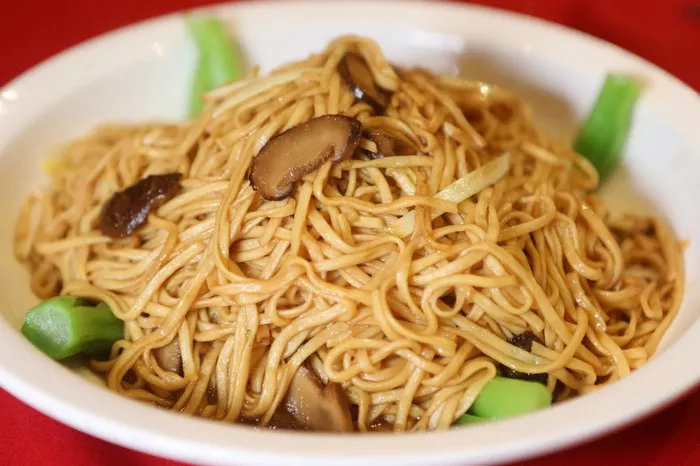Oplatek, a term that may sound unfamiliar to many, holds profound significance in certain cultures and traditions. This thin, unleavened wafer, often referred to as a “Christmas wafer,” carries a rich history and symbolism that transcends its humble appearance. In this article, we will explore what oplatek is, its cultural importance, and the traditions associated with it.
1. Understanding Oplatek: The Basics
At its core, oplatek is a thin, crisp wafer made from wheat flour and water. It is typically rectangular or square in shape and features intricate patterns or religious imagery embossed on its surface. Oplatek is known for its simplicity and purity, which are key attributes contributing to its cultural and religious significance.
2. Oplatek in Christian Traditions
Oplatek is most closely associated with Christian traditions, particularly in Eastern and Central Europe. It is a significant part of the Christmas Eve supper, also known as “Wigilia” in Polish tradition. During Wigilia, family members gather around the table, and each person is given a piece of oplatek.
3. The Ritual of Sharing Oplatek
The act of sharing oplatek is a deeply symbolic and emotional ritual. Each family member breaks off a piece of oplatek and offers it to another while extending well-wishes, blessings, and forgiveness. This ritual emphasizes unity, forgiveness, and the importance of family bonds.
4. Oplatek in Polish Culture
In Poland, oplatek is an integral part of the country’s cultural and religious heritage. It is often accompanied by other traditional dishes such as barszcz (beet soup) and pierogi (dumplings). The sharing of oplatek serves as a reminder of the importance of family and faith during the holiday season.
5. Oplatek Beyond Poland
While oplatek is most prominently associated with Poland, variations of this tradition can be found in other countries with significant Polish communities. In the United States and Canada, for example, Polish immigrants continue to practice the oplatek ritual, passing down their cultural heritage to new generations.
6. Oplatek and Interfaith Understanding
Oplatek is a powerful symbol of unity and interfaith understanding. It showcases the shared values of love, forgiveness, and family that resonate across different religious and cultural backgrounds. In a world that often emphasizes differences, oplatek serves as a beautiful reminder of our common humanity.
7. The Future of Oplatek
In an era of globalization, oplatek faces challenges in maintaining its traditional essence. However, many individuals and organizations are committed to preserving this cherished tradition and its cultural significance. The future of oplatek may involve adapting to modern lifestyles while safeguarding its core values.
Conclusion: Oplatek – More Than Just a Wafer
In conclusion, oplatek is far more than a simple wafer; it is a symbol of love, unity, and tradition. Whether shared in a Polish household during Wigilia or as part of an interfaith celebration, oplatek carries the message of peace and togetherness. Its enduring presence in the lives of those who cherish it is a testament to the power of tradition in fostering connections among family members and across cultures.
FAQs about oplatek:
Q1: What is the significance of oplatek in Polish culture?
A1: Oplatek holds deep significance in Polish culture, particularly during Wigilia, the Christmas Eve supper. It symbolizes unity, forgiveness, and the importance of family bonds. Each family member shares a piece of oplatek while extending well-wishes and blessings to one another.
Q2: Is oplatek exclusive to Poland, or is it celebrated in other countries as well?
A2: While oplatek is most prominently associated with Poland, variations of this tradition can be found in other countries with significant Polish communities, such as the United States and Canada. Polish immigrants continue to practice the oplatek ritual and pass down their cultural heritage.
Q3: How is oplatek made?
A3: Oplatek is made from wheat flour and water. It is rolled out into thin, crisp wafers, which are then often embossed with intricate patterns or religious imagery. The wafers are typically rectangular or square in shape.
Q4: What are some other dishes or traditions associated with oplatek during Wigilia in Poland?
A4: Wigilia in Poland includes a variety of traditional dishes, such as barszcz (beet soup), pierogi (dumplings), and kutia (a sweet grain dish). Oplatek is a central element of the meal, and the sharing of it is accompanied by blessings and well-wishes.
Q5: How does the oplatek ritual promote interfaith understanding?
A5: The oplatek ritual emphasizes values like love, forgiveness, and family bonds, which are universal and transcend religious boundaries. When individuals from different faiths come together to share oplatek, it fosters a sense of unity and understanding among diverse communities.
Q6: Are there any challenges to preserving the tradition of oplatek in the modern world?
A6: One challenge is adapting the tradition to modern lifestyles while safeguarding its core values. Additionally, as cultures become more interconnected, maintaining the authenticity of oplatek can be a challenge, but many individuals and organizations are committed to its preservation.
Q7: Can I purchase oplatek if I’m not part of a Polish tradition?
A7: Yes, oplatek is available for purchase in some specialty stores, especially in areas with Polish communities. You can also find it online. While it may not hold the same cultural significance for everyone, sharing oplatek can be a meaningful and inclusive gesture during holiday gatherings.























